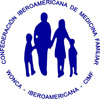Post-exposure prophylaxys to rabies: a review
Resumo
Introdução: Rabies is a disease caused by a single-strand RNA virus in the family Rhabdoviridae that occurs in many species of mammals. It is transmitted by saliva of sick animals, mainly through the bite. As a serious illness, with high lethality, it causes an acute, progressive encephalomyelitis and leads to death more than 55.000 people per year worldwide, especially in developing countries and rural areas.
Objetivos: Review the evidence base to recommend the administration of rabies vaccine in four doses as a routine in post-exposure prevention, based in immunogenicity, clinical experience and cost-effectiveness in areas of the world with enzootic canine or wildlife rabies.
Metodologia ou descrição da experiência : We search articles in a data base with descriptors: rabies; post-exposure prophylaxis; vaccine; wild-type; central nervous system; immunity; vaccine schedule; WHO; CDC; failure; advantage; cost-effectiveness; in the period 2000-2013. We also evaluated the current schedule of PEP widely used in Brazil and compare to the recommendations of other health organizations. We expect to find the schedules of PEP and correlate them with their immunogenicity and ability to prevent disease based in High Evidence studies. We also expect that reducing the number of doses we would have fewer side effects, lower costs, greater compliance with treatment, in addition to achieve a more complete treatment.
Resultados: In a detailed review of the evidence, four-dose schedule for human PEP has widely published. In a literature review conducted by the ACIP Rabies Workgroup, all subjects developed rabies virus-neutralizing antibodies by day 14. Following this and others analysis, the Centers for Disease Control and Prevention decided in 2010 to recommend a rabies PEP with 4 intramuscular doses of vaccine on days 0, 3, 7, and 14. This 4-dose regimen was an adequate alternative for healthy, fully immunocompetent individuals who had received wound care plus high-quality human rabies immunoglobulin. The cost savings associated with a reduced schedule of vaccination would save approximately $16.6 million in U.S.
Conclusões ou hipóteses: The 4-dose schedule is an immunologically effective and cost-effective alternative to PEP in rabies. This is very important in developing countries like Brazil, that recommends a 5-dose schedule, because besides concentrating the most cases and potential exposure to rabies, often have limited financial resources. Further studies in these populations are necessary to these results to sediment.
Palavras-chave
Texto completo:
PDF (English)Apontamentos
- Não há apontamentos.
Este periódico é de responsabilidade das associações:
Apoio institucional:







